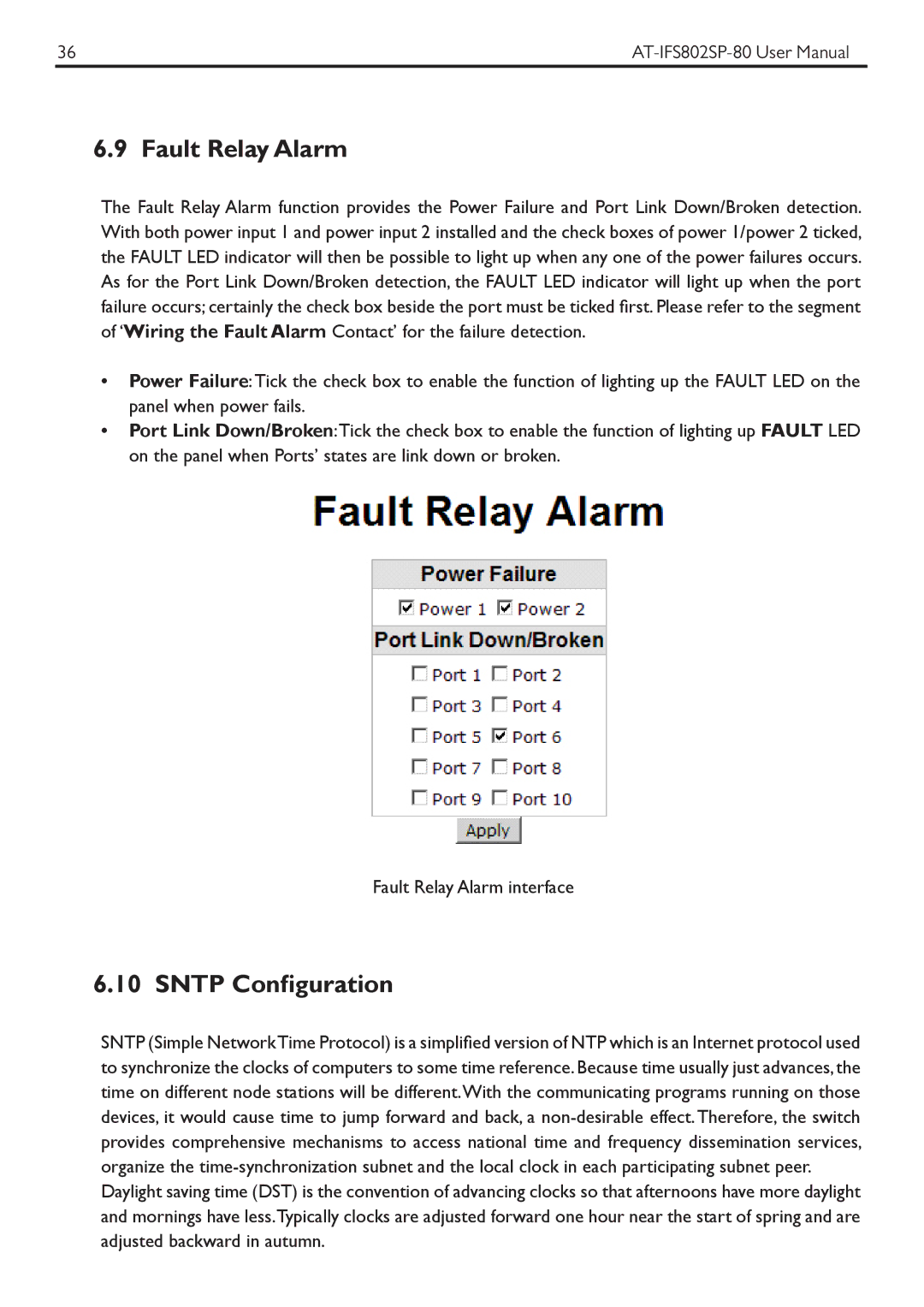
36 | |
|
|
6.9 Fault Relay Alarm
The Fault Relay Alarm function provides the Power Failure and Port Link Down/Broken detection. With both power input 1 and power input 2 installed and the check boxes of power 1/power 2 ticked, the FAULT LED indicator will then be possible to light up when any one of the power failures occurs. As for the Port Link Down/Broken detection, the FAULT LED indicator will light up when the port failure occurs; certainly the check box beside the port must be ticked first. Please refer to the segment of ‘Wiring the Fault Alarm Contact’ for the failure detection.
•Power Failure:Tick the check box to enable the function of lighting up the FAULT LED on the panel when power fails.
•Port Link Down/Broken:Tick the check box to enable the function of lighting up FAULT LED on the panel when Ports’ states are link down or broken.
Fault Relay Alarm interface
6.10 SNTP Configuration
SNTP (Simple NetworkTime Protocol) is a simplified version of NTP which is an Internet protocol used to synchronize the clocks of computers to some time reference. Because time usually just advances, the time on different node stations will be different.With the communicating programs running on those devices, it would cause time to jump forward and back, a
Daylight saving time (DST) is the convention of advancing clocks so that afternoons have more daylight and mornings have less.Typically clocks are adjusted forward one hour near the start of spring and are adjusted backward in autumn.
